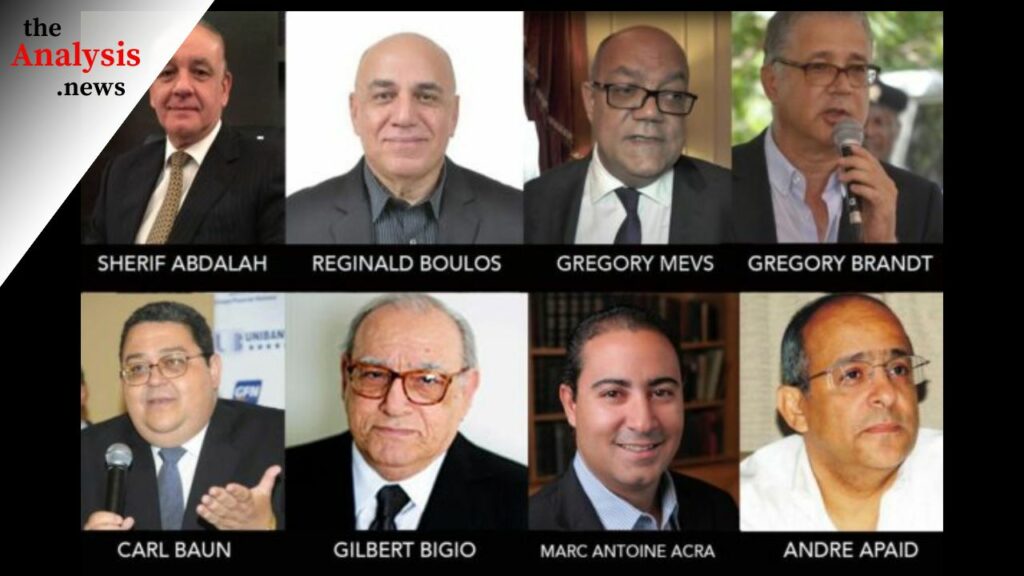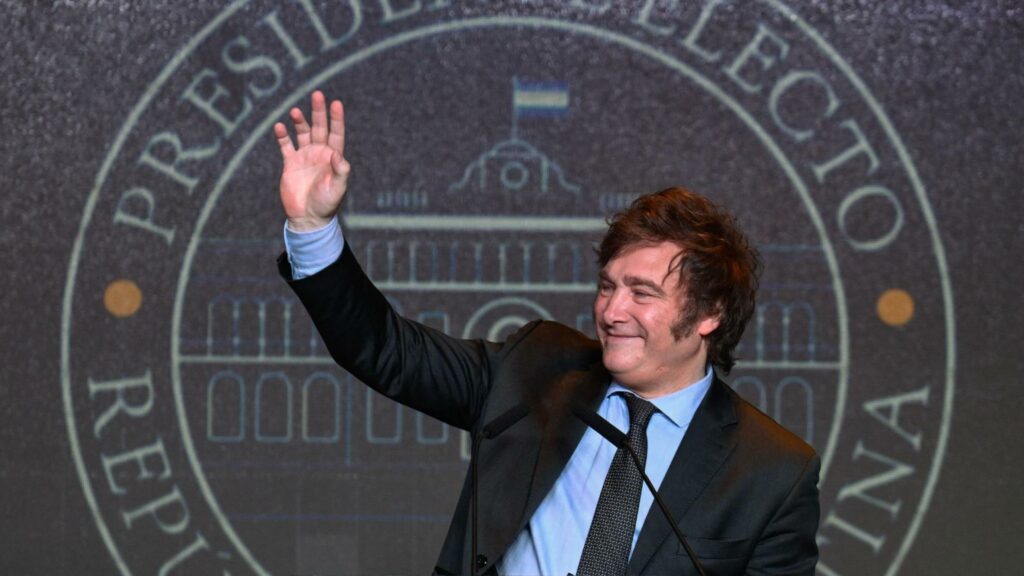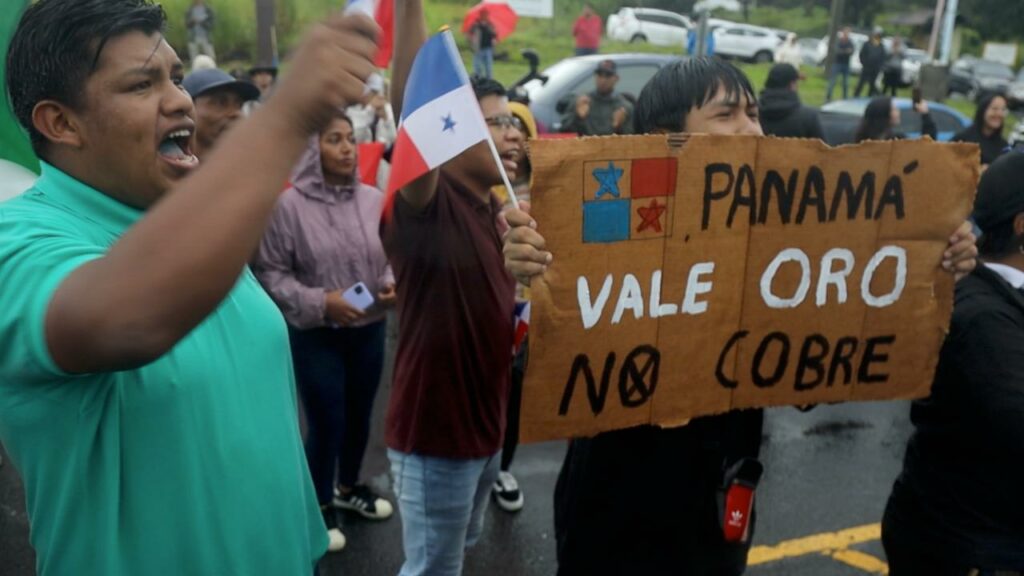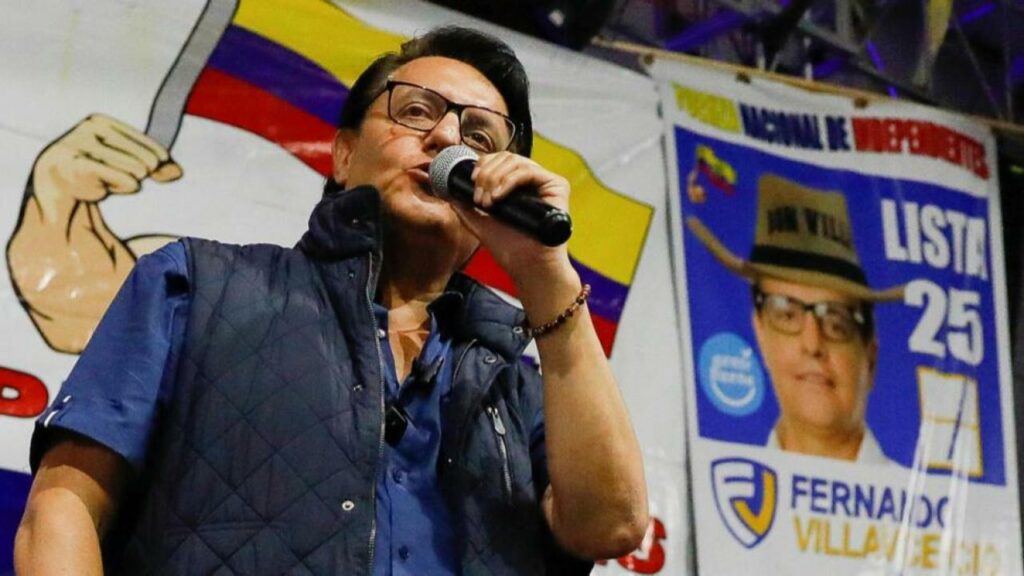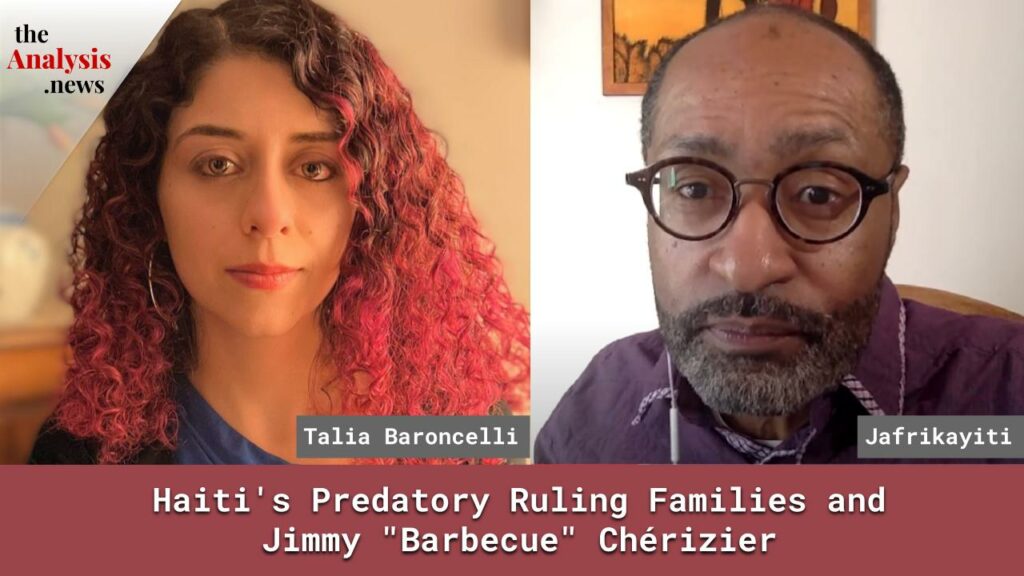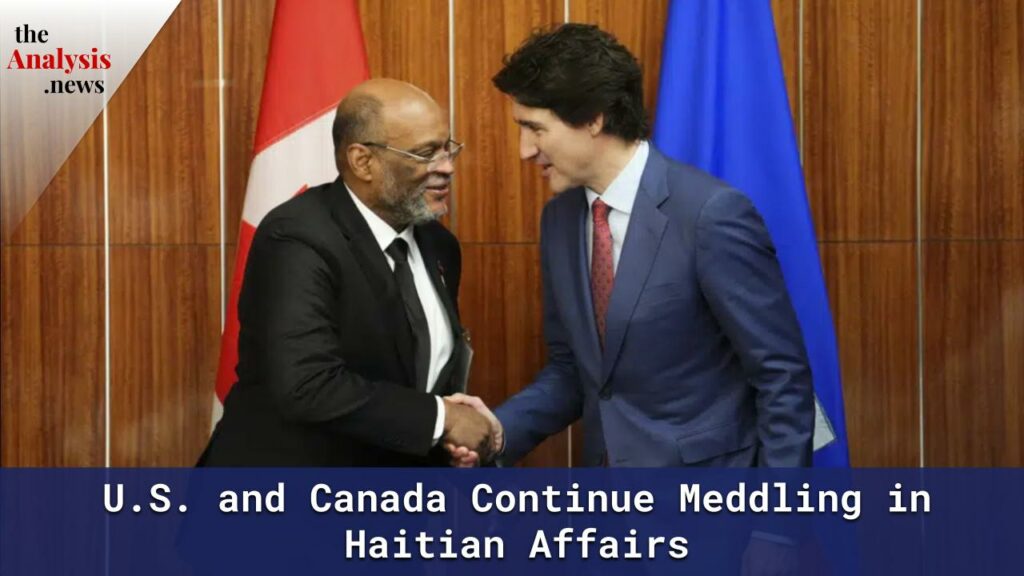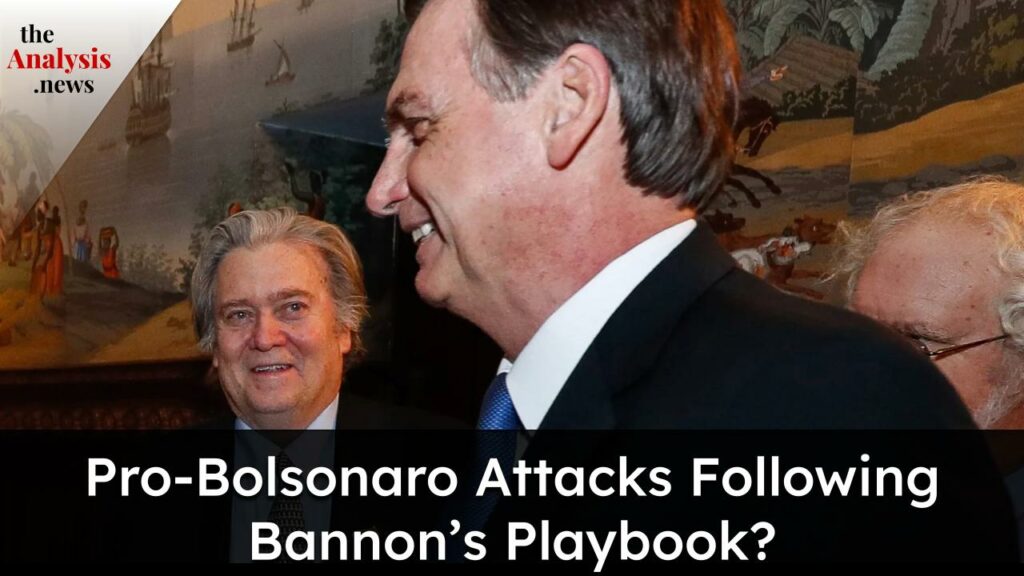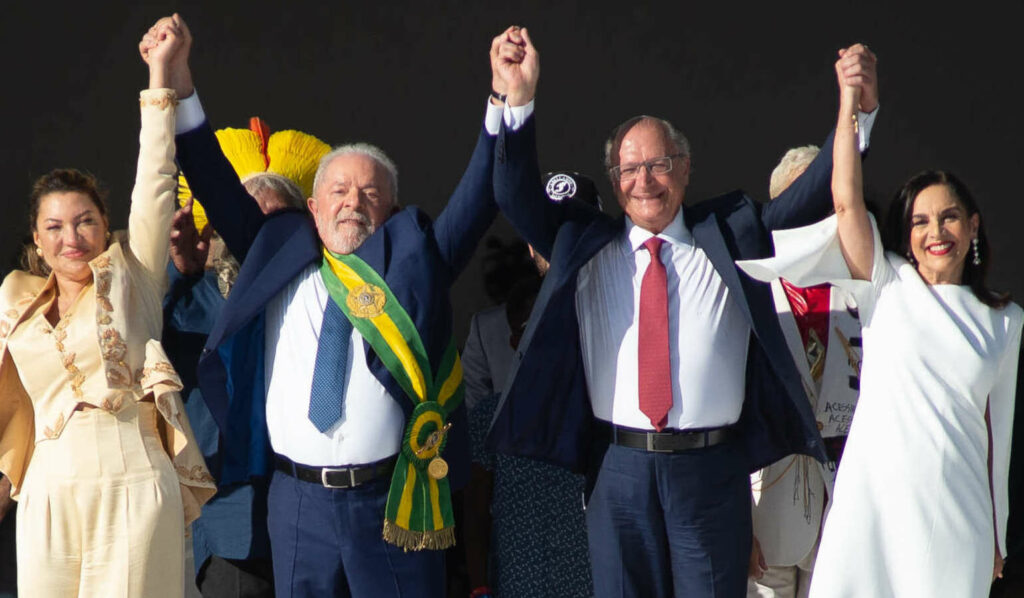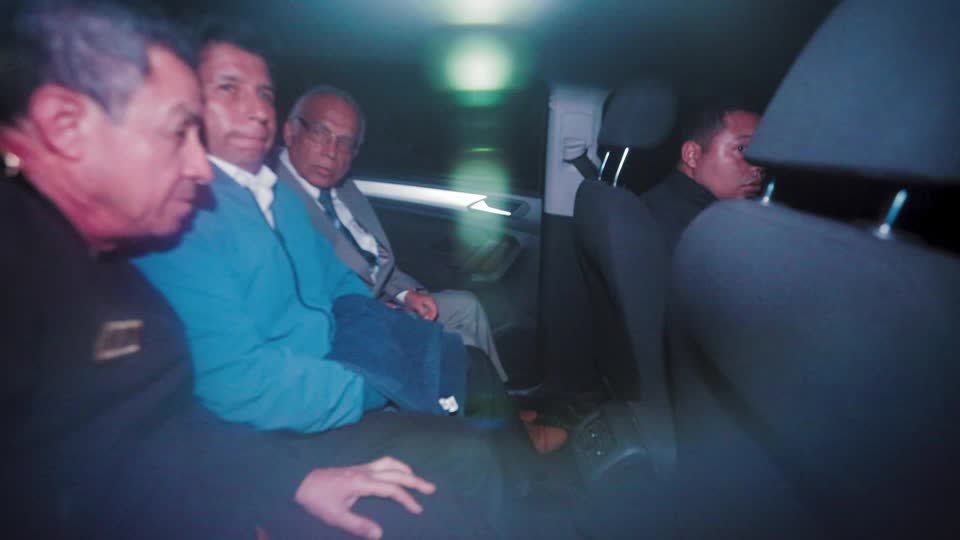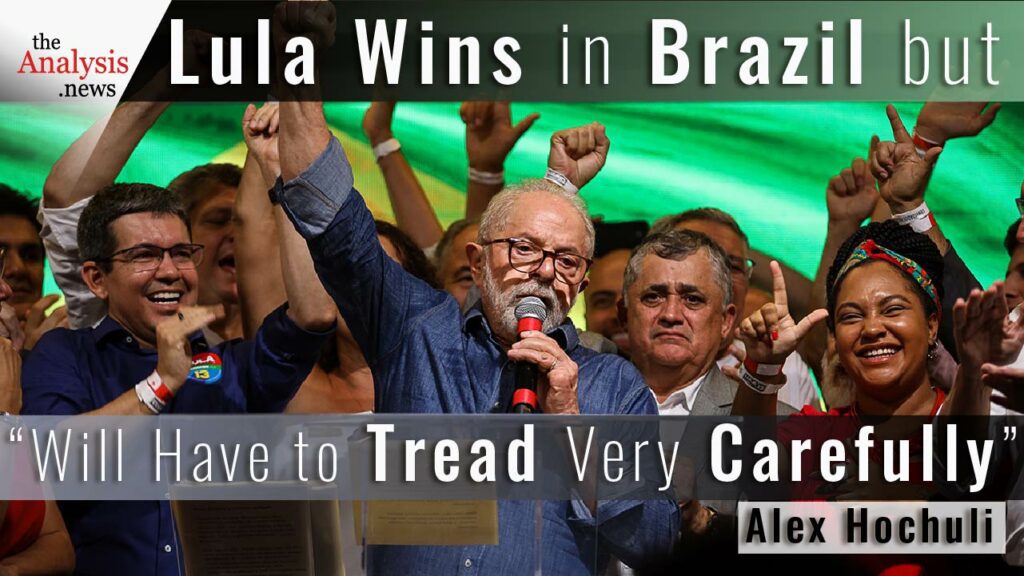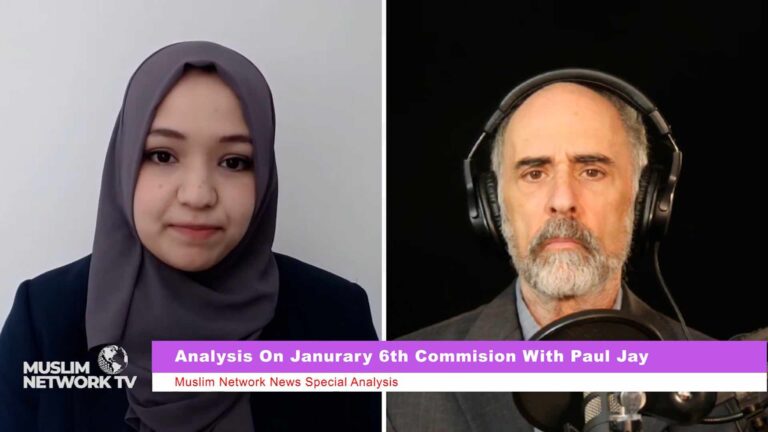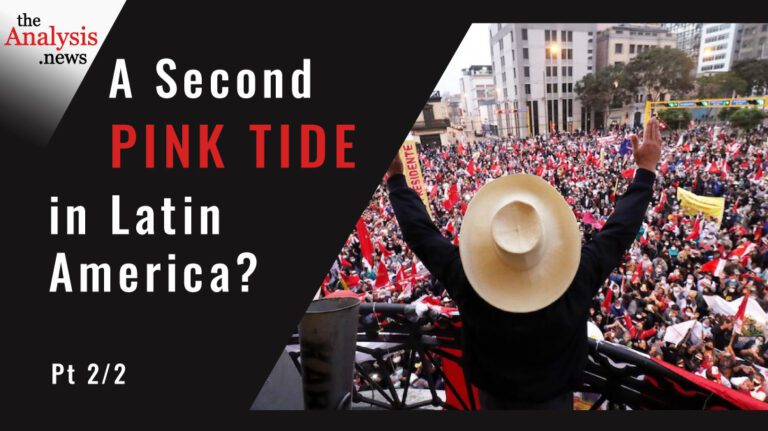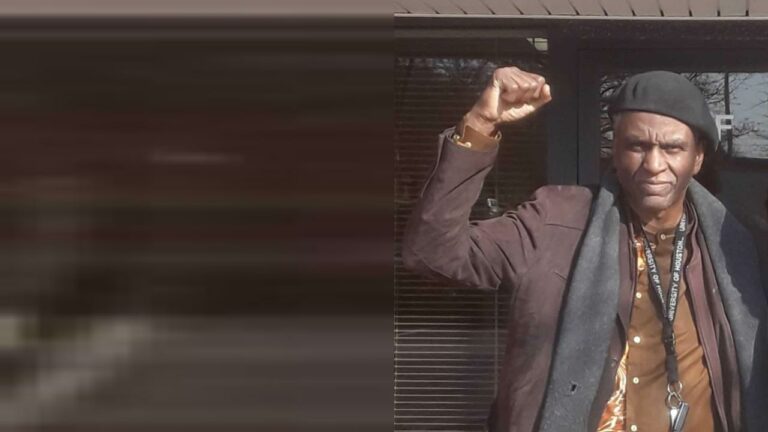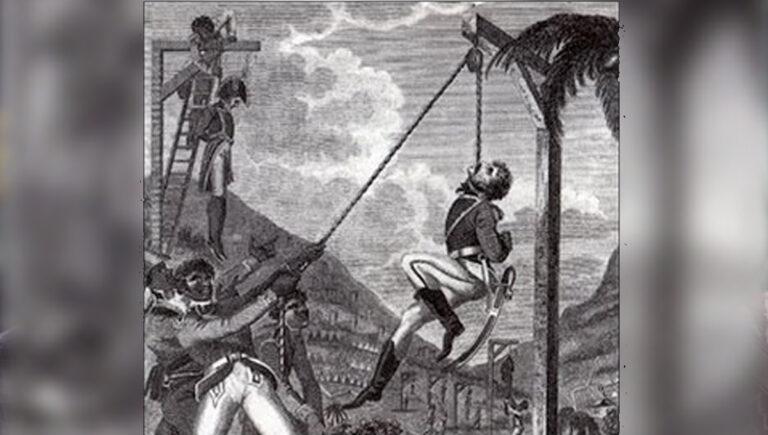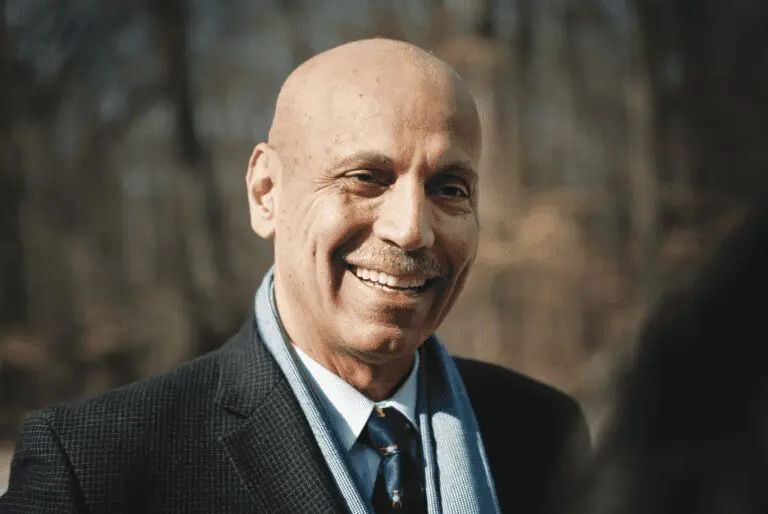Nearly 50 protesters have been killed by police in Peru following the removal from office of President Pedro Castillo six weeks ago. Peru analyst Francesca Emanuele says that the conflict is symptomatic of Peru’s systematic exclusion of the poor and indigenous population from its political system.
Greg Wilpert
Welcome to The World on Fire. I’m Greg Wilpert. Last Monday, January 9, Peruvian police shot and killed 17 protesters in the border town of Juliaca, near Bolivia. This brings the total number of civilians killed in Peru in almost daily protests over the past two months to 47 ever since Peru’s elected President, Pedro Castillo, was impeached last December 7.
Castillo had served a mere year and a half in office and endured three attempts to remove him. The last one was successful after Castillo tried to dissolve Congress, whereupon he lost the last remaining support he had in the legislature. His vice president, Dina Boluarte, became president, and protests against Castillo’s removal from office began almost immediately. Boluarte reacted by imposing a state of emergency that suspended constitutional rights, which further aggravated the situation.
Joining me now again to discuss these and related events in Peru is Francesca Emanuele. She is a Peruvian Ph.D. student in Anthropology at the American University. She is also a columnist for the Peruvian news outlet Wayka. Thanks for joining me again, Francesca.
Francesca Emanuele
Thank you so much for inviting me, Greg.
Greg Wilpert
Just give us a big brief rundown as to what has happened since Castillo’s impeachment. I gave some of the details, but if you could fill in some more of the gaps of what’s happened. Also, of course, I encourage people to check out our earlier interview that took place shortly after Castillo was removed last December.
Francesca Emanuele
Yeah, sure. So I can safely say that Peru is ruled by an authoritarian and repressive government led by Dina Boluarte. This administration is only governing with the Right, the extreme Right. In 40 days since taking power, it has killed almost half a hundred working-class, indigenous, and Campesino Peruvians. This government has been committing massacres against its own people. Let’s go one step at a time. In the first two days since Castillo was ousted, there were few protests. They spread out in the rural areas of the country as soon as it became clear that the new administration would govern only with the Right and with the extreme right wing within Congress.
In Peru, the current Congress as an institution is deeply unpopular, with an approval rating of 8%. Maybe now, even less. We Peruvians hate this institution because many parliamentarians tried to steal the elections from Castillo when he won in 2021 by claiming fraud with no evidence. We reject them, these parliamentarians, because, in general, most of them are corrupt, racist, and praise anti-working class policies.
Protesters were also enraged because Boluarte and the corrupt Congress wanted to stay in power until the end of the term in 2026. Since it became clear that the right wing within Congress had finally captured all branches of the state, including the executive, by getting rid of Castillo and had also managed to make President Boluarte their puppet, protests haven’t receded. Some analysts say that we are, meaning Peruvians, under congressional dictatorship. I agree.
The epicenter of the first protest and the first murders due to police repression took place in Apurímac, which is the homeland of President Dina Boluarte, located in the Andes of Peru. The death toll was six, and Boluarte responded by announcing that elections would move up to 2024. Protesters dismissed the announcement because they wanted elections now. So protests continued, and repression became even more brutal. A nationwide state of emergency, as you mentioned, was announced, and since then, we have had two more massacres. The one in Ayacucho, where the government deployed the military and murdered ten people. Some of those killings have been described as extrajudicial executions by human rights organizations. The latest massacre took place in the Puño region on January 9. Seventeen people were murdered, as you mentioned, and all with firearms, including a minor and a volunteer doctor who was helping the injured.
These are not random killings. The victims are located in the same regions of the country that voted for Pedro Castillo in the 2021 elections. The victims are Campesino people and indigenous people only, all rural residents. There are no victims in Lima, where the economic and political power of Peru is concentrated and where one-third of the population lives, despite the fact that Lima comprises 0.4% of the national territory. So from Lima, the rest of the citizenry is mostly seen as ignorant and lesser beings. This is partly the reason why this government is still standing.
In 2020, there were also protests. Two limeños, people from Lima, were killed by the police. The government, at that time, was forced to resign. But this is not the case today because the killings are located in rural areas, as I mentioned. So now there are about 100 roadblocks, and people from different regions are walking or traveling towards the capital for a big mobilization or for a big protest. Maybe then the government will listen.
Greg Wilpert
I want to get to the issue of racism in Peru in a moment, but you mentioned that most of the participants in the protests are indigenous and Campesinos. I’m wondering, are these all spontaneous protests, or are there organizations that are being organized by particular groups? How do you see the balance of that?
Francesca Emanuele
Yeah, most of these protests are spontaneous, despite the fact that there are organizations that are also joining the protest and are trying to articulate among them. The demands are still the same as a month ago; only some are now more important than others. The resignation of Dina Boluarte is a widespread demand. There is a call for an election now. People want elections now, not in 2024. People are also demanding the closure of Congress. The other demand is the release of Castillo from prison, which continues to be a demand, but has lost some strength in light of the massacres committed by this government.
Something that I want to clarify is that the reinstatement of Castillo is an almost nonexistent demand. Castillo was not a good president. He broke his promises. He articulated with the Right. Although the fact that he was ousted was the catalyst for the protests, Castillo has ceased to represent hopes for change. Protesters or demonstrators want him released from prison because he’s unjustly in prison and also because there is a strong identification with him for all the mistreatment and racism he has suffered from Congress, from the prosecutor’s office, from the media, and from the oligarchy.
For example, the charges for which he is now in pretrial detention are absurd. Congress has stripped Castillo of his immunity without due process. So the population recognizes all of this. But as I told you, Castillo betrayed his promises of change, and that is why hardly anyone in Peru is asking for his reinstatement as president.
Greg Wilpert
So one of the points that you made earlier was that there’d been a tremendous amount of racism and classism against a large segment of the population, obviously the Campesinos and the indigenous population and that this is fueling the protest. You also wrote an article, a very good article recently for the Council on Hemispheric Affairs, that outlined some of this. Talk about in what sense Castillo’s overthrow and the subsequent protests expose the Peruvian elite’s racism and classism.
Francesca Emanuele
Yes, I already talked a little bit about this, as you mentioned. But, yes, I consider that one of the roots of this protest is the structural racism in Peru. It is brutal. We live in a de facto apartheid. In Lima, there’s a wall, an actual wall that divides wealthy neighborhoods from poor ones, and that tells you a lot.
I wrote the article you mentioned on how Castillo was subjected to various forms of racist stigma and how that unleashed a mirror effect among his sympathizers. He was called a donkey and a dumb Indian. He was called that by authorities, by the media, and nothing happened. Everything was okay. No one was punished. This racism is also related to how demonstrators are being described by authorities right now. The president, the ministers, and the media are saying that protesters are criminals or terrorists. They say this literally– criminalizing lawful assembly and discrediting reasonable demands. Meanwhile, they have presented no evidence in support of their allegations, and actually, they don’t have any.
Let me give you some context. In the ’80s and ’90s, Peru went through an internal armed conflict between Abimael [Guzmán] Maoist guerrilla group called Sendero Luminoso, or the Shining Path, and the government. During this period, the government imprisoned thousands of innocent indigenous and Campesino people, falsely accusing them of terrorism, and actually killed an estimated 30,000 people.
In the following decades leading up to today, the Left and the poor, fed up with the system, have been consistently discredited by linking it to the Shining Path, Sendero Luminoso. Every time someone wants to change the status quo, the ghost of the Shining Path is used by the establishment and the elites as we see it today. There is no connection, as I said, between the protests of today and the legacy of the Shining Path. The truth is that the people are fed up with the system and will continue protesting until they feel that there is a response channeled towards structural change, towards a Peru where they are considered full citizens with rights and protections for all, not just for those in Lima. As I told you, this is a long-standing fight.
Something that I want to add is how this government is criminalizing the Left and the protest. It is raiding the government premises of Left groups, headquarters of Left groups, arresting Campesino leaders, and trying to prosecute them as terrorists. Yesterday, in Ayacucho, in the Andes of Peru, it happened against seven Campesino leaders. Seven Campesino leaders were arrested. The other issue I want to say is that the police are using horrendous tactics to criminalize the protests. They are sending infiltrators to the protest and causing violent acts to justify their mass arrests and the killings.
Greg Wilpert
So one of the factors that you mentioned, of course, in addition, to what’s making the situation worse with regard to racism and classism in Peru, is, of course, the role of the media. You mentioned some aspects of that, but what role has the media really played in Castillo’s overthrow and also in the situation today?
Francesca Emanuele
Yeah, in Peru, we live in a media bubble, and this is related to the dysfunctionality of our democracy and the difficulty of achieving justice in the face of any abuse by the government and the authorities. One company in Peru owns more than 80% of the written press. For example, you go to a kiosk, you see many newspapers, and you think that they are different newspapers, but they are owned by the same company. Three companies own 84% of all the television, printed press, radio stations, and news websites. It is not random that many protests have taken place in front of the headquarters of TV stations, for example. The demonstrators know that the Peruvian media misinforms and is an actual ally of the repressive government and, of course, of the oligarchy.
The mainstream media is not covering the massacres. It is really terrible. Just to give you an example, a few weeks ago, Reuters published a video from a security camera that showed a man being shot from behind by a soldier while the man was kneeling to help an injured man. The Peruvian press did not even report it, despite the fact that it proves the violations of human rights by this government.
In addition, the mainstream media outlets are located mainly in Lima and are the only ones that receive public money through state advertising. So the small rural media outlets have almost no resources, and as a consequence, people have to rely on alternative media and social media. Peru needs a law to democratize the media so that the monopoly that exists in the media today ends, and we can only have a democracy if there is a diversity of media outlets and perspectives.
Greg Wilpert
Now, another issue, of course, is what is the role of the United States in all of this? The Biden administration, particularly, and also, of course, the Organization of American States, which normally would take some kind of responsibility or role in this kind of situation. Has either one of them, the Organization of American States, the OAS, or the Biden administration, done or said anything so far?
Francesca Emanuele
Yeah, that’s a great question. The United States has been supporting this government from the beginning. The Organization of American States hasn’t said anything about the human rights violations of this government and the massacres. The United States hasn’t said from the State Department anything against or calling to stop the human rights violations or the violence committed by the government against the protesters. The Inter-American Commission on Human Rights traveled to Peru in December and supposedly was going to a issue report, but it didn’t. It went a few days ago, again, it was the second visit, the second delegation, and it gave a press conference where it pointed out how horrible the violation of human rights were. So if we think about the Inter-American system, yeah, the Inter-American Commission on Human Rights has denounced these massacres and the clear violation of human rights committed by this government and the criminalization of the protest. So far, as I said, the Organization of American States, which actually condemned the attacks, the fascist attacks in Brazil, didn’t condemn the behavior of this government in Peru. The Biden administration hasn’t done it either. It continues to support it.
Greg Wilpert
I understand that they even sent some money. Can you say something about that and what that money is for?
Francesca Emanuele
Yes, so the U.S. Ambassador to Peru announced that a new donation of $8 million had been given to Peru to combat narco-traffic. This was an announcement within this month since the government of Dina Boluarte took office. So it clearly shows the support of the United States to this government.
Greg Wilpert
That was just before the massacre happened in Puño. Now looking forward to the future, what do you think needs to happen for this crisis to be resolved? Are there political actors in Peru, at the moment, who are working towards a positive resolution, and what are their chances?
Francesca Emanuele
Yeah, to solve the crisis, we need a transformation of the state structures that reinforce racism and exclusion. A first step would be to open the democratic system so that those groups that are protesting and excluded from electoral participation can participate in the elections. The party system is practically impenetrable for social movements and for leftist groups without financial resources, which are pretty much all of them. Right now, we only have parties that are right-wing, and we only have parties that are owned by corrupt businessmen.
I don’t know if I talked about this the last time we spoke, but one of the left-wing leaders in Peru, Verónika Mendoza, received about 3 million votes in the presidential elections of 2016 and almost reached the second round. Until now, she hasn’t been able to register her party because of extremely difficult requirements to fulfill. So that gives you an example of how difficult or how impenetrable the party system is in Peru.
Thinking about a more powerful step towards resolving the crisis is to start a process for a new social pact leading to a new constitution. If you ask me right now how the change could begin to take place, I think it would be the immediate resignation of the President, Dina Boluarte, and moving up the elections to 2023, as people are demanding on the streets.
But, of course, if the conditions are not met for the participation in the next elections of the excluded sectors of Peru’s society, the ones that are protesting now, the power will be recaptured fully by the Right, the Right that is being rejected in the streets, and we will continue this long-standing political and social crisis.
Greg Wilpert
I didn’t realize that Verónika Mendoza’s party, I guess it’s called Nuevo Peru, New Peru, hasn’t been able to register. Would that mean that if there were congressional elections, she wouldn’t be able to have any representation in Congress?
Francesca Emanuele
Likely.
Greg Wilpert
Okay, well, we’ll definitely continue to keep an eye on the developments there, but we’ll leave it there for now. I was speaking to Francesca Emanuele, a Peruvian Ph.D. student in Anthropology at the American University. Thanks again, Francesca, for having joined me.
Francesca Emanuele
Thank you so much, Greg.
Greg Wilpert
Thank you, our audience, for joining The World on Fire. Until next time.
Greg Wilpert
Bienvenido a The World on Fire. Soy Greg Wilpert.
El pasado lunes 9 de enero policías peruanos mataron a tiros a 17 manifestantes en la ciudad fronteriza de Juliaca, cerca de Bolivia. Con esto se eleva el total de civiles asesinados en Perú en protestas casi diarias en los últimos dos meses a 47 desde que el presidente electo de Perú, Pedro Castillo, fuera destituido el pasado 7 de diciembre. Castillo había servido apenas un año y medio en el cargo, después de tres intentos para destituirlo. El último tuvo éxito después de que Castillo intentara disolver el Congreso, con lo cual perdió el último apoyo que le quedaba en la legislatura. Su vicepresidenta, Dina Boluarte, asumió la presidencia, y las protestas contra la destitución de Castillo comenzaron casi de inmediato. Boluarte reaccionó imponiendo un estado de excepción que suspendía los derechos constitucionales, lo que agravó aún más la situación.
Me acompaña nuevamente para hablar de estos y otros acontecimientos relacionados en Perú Francesca Emanuele. Ella es una estudiante peruana de doctorado en Antropología en la Universidad Americana. También es columnista del medio peruano Wayka.
Gracias por acompañarme nuevamente, Francesca.
Francesca Emanuele
Muchas gracias por invitarme, Greg.
Greg Wilpert
Danos un breve resumen de lo que ha sucedido desde la destitución de Castillo. He dado algunos de los detalles, pero quizá pudieras llenar algunos de los vacíos de lo que sucedió. Además, por supuesto, animo a la gente a ver nuestra entrevista anterior, que tuvo lugar poco después de la destitución de Castillo en diciembre.
Francesca Emanuele
Sí, por supuesto. Puedo decir con seguridad que Perú está gobernado por un Gobierno autoritario y represivo liderado por Dina Boluarte. Esta administración solo está gobernando con la derecha, la extrema derecha. En los 40 días desde que asumió el poder, ha matado a casi medio centenar de peruanos, obreros, indígenas y campesinos. Este Gobierno ha estado cometiendo masacres contra su propio pueblo.
Vayamos por pasos. En los primeros dos días después de la expulsión de Castillo, hubo pocas protestas. Se extendieron a las zonas rurales del país tan pronto como quedó claro que la nueva administración gobernaría solo con la derecha y con la extrema derecha dentro del Congreso. En Perú, el actual Congreso como institución es profundamente impopular, con un índice de aprobación del 8 %. Quizá ahora incluso menos. Los peruanos odiamos esta institución porque muchos parlamentarios intentaron robarle las elecciones a Castillo cuando ganó en 2021 alegando fraude sin ninguna prueba. Rechazamos a estos parlamentarios porque, en general, la mayoría de ellos son corruptos, racistas y defienden las políticas antiobreras.
Los manifestantes también se enfurecieron porque Boluarte y el Congreso corrupto quieren mantenerse en el poder hasta el final de la legislatura en 2026. Desde que quedó claro que la derecha dentro del Congreso finalmente había capturado todas las ramas del Estado, incluido el ejecutivo, al deshacerse de Castillo, y haber logrado también hacer de la presidenta Boluarte su títere, las protestas no han disminuido.
Algunos analistas dicen que los peruanos estamos bajo una dictadura del Congreso. Estoy de acuerdo. El epicentro de la primera protesta y los primeros asesinatos por represión policial se dieron en Apurímac, que es la región natal de la presidenta Dina Boluarte, situada en los Andes de Perú. Hubo seis muertos, y Boluarte respondió anunciando que las elecciones se adelantarían a 2024. Los manifestantes rechazaron este anuncio porque quieren elecciones ahora. Así que continuaron las protestas y la represión se hizo aún más brutal. Se anunció un estado de emergencia a nivel nacional, como has mencionado, y desde entonces hemos tenido dos masacres más. En la de Ayacucho, el Gobierno desplegó al ejército y asesinó a diez personas. Algunos de esos asesinatos han sido descritos por organizaciones de derechos humanos como ejecuciones extrajudiciales. La última masacre ocurrió en la región de Puño el 9 de enero. Diecisiete personas fueron asesinadas, como has dicho, y todas con armas de fuego, entre ellas un menor y un médico voluntario que ayudaba a los heridos.
Estos no son asesinatos aleatorios. Las víctimas vivían en las mismas regiones del país que votaron por Pedro Castillo en las elecciones de 2021. Las víctimas son únicamente campesinos e indígenas, todos de zonas rurales. No hay víctimas en Lima, donde se concentra el poder económico y político de Perú y donde vive un tercio de la población, a pesar de que Lima comprende el 0,4 % del territorio nacional. Entonces, desde Lima, el resto de la ciudadanía es considerada en su mayoría como seres ignorantes e inferiores. Esta es en parte la razón por la que este Gobierno sigue en pie.
En 2020, también hubo protestas. Dos limeños fueron asesinados por la policía. El Gobierno, en ese momento, se vio obligado a dimitir. Pero ese no es el caso hoy porque los asesinatos se dieron en las zonas rurales, como he dicho. Ahora hay alrededor de 100 controles de carretera, y personas de diferentes regiones caminan o viajan hacia la capital para una gran movilización, o para una gran protesta. Quizás entonces el Gobierno escuche.
Greg Wilpert
Quiero tocar el tema del racismo en Perú en un momento, pero has dicho que la mayoría de los participantes en las protestas son indígenas y campesinos. Me pregunto: ¿son todas estas protestas espontáneas, o hay organizaciones que están siendo dirigidas por grupos particulares? ¿Cómo ves el balance de eso?
Francesca Emanuele
Sí, la mayoría de estas protestas son espontáneas, a pesar de que hay organizaciones que también se están sumando a la protesta y están tratando de colaborar entre ellas. Las exigencias siguen siendo las mismas que hace un mes, solo que algunas son ahora más importantes que otras.
La dimisión de Dina Boluarte es una reivindicación generalizada. Ahora se ha pedido que se convoquen elecciones. La gente quiere elecciones ahora, no en 2024. La gente también está exigiendo el cierre del Congreso. La otra demanda es la excarcelación de Castillo, que sigue siendo una demanda pero ha perdido algo de fuerza ante las masacres cometidas por este Gobierno. Algo que quiero aclarar es que la reinstauración de Castillo es una demanda casi inexistente. Castillo no fue un buen presidente. Rompió sus promesas. Colaboró con la derecha. Aunque el hecho de que fuera expulsado fue el detonante de las protestas, Castillo ha dejado de representar esperanzas de cambio.
Los opositores o manifestantes quieren que salga de prisión porque está encarcelado injustamente y también porque hay una fuerte identificación con él por todo el maltrato y racismo que ha sufrido por parte del Congreso, de la fiscalía, de los medios de comunicación y de la oligarquía. Por ejemplo, los cargos por los que ahora está en prisión preventiva son absurdos. El Congreso ha despojado a Castillo de su inmunidad sin el debido proceso. Entonces, la población reconoce todo esto. Pero como he dicho, Castillo traicionó sus promesas de cambio, y por eso casi nadie en Perú pide su reinstauración como presidente.
Greg Wilpert
Uno de los puntos que has mencionado es que ha habido una tremenda cantidad de racismo y clasismo contra un amplio segmento de la población, obviamente los campesinos y la población indígena, y que esto está alimentando la protesta. También escribiste un artículo muy bueno recientemente para la Secretaría de Asuntos Hemisféricos en el que esbozabas algo de esto. Habla de en qué sentido la destitución de Castillo y las protestas posteriores exponen el racismo y el clasismo de la élite peruana.
Francesca Emanuele
Sí, ya hablé un poco sobre esto, como has mencionado. Pero sí, considero que una de las causas de esta protesta es el racismo estructural en Perú. Es brutal. Vivimos en un apartheid de hecho. En Lima hay un muro, un muro de verdad, que divide los barrios ricos de los pobres, y eso te dice mucho. Escribí el artículo que mencionaste sobre cómo Castillo sufrió varias formas de estigma racista y cómo eso creó un efecto espejo entre sus simpatizantes. Lo llamaron burro e indio estúpido. Lo llamaron así las autoridades, los medios, y no pasó nada. Todo estaba bien. Nadie fue castigado.
Este racismo también está relacionado con la forma en que las autoridades describen a los manifestantes en este momento. El presidente, los ministros y los medios dicen que los manifestantes son criminales o terroristas. Lo dicen literalmente, criminalizando el derecho a manifestarse y desacreditando demandas razonables. Mientras tanto, no han presentado ninguna prueba en apoyo de sus alegaciones y, en realidad, no tienen ninguna.
Te daré un poco de contexto. En los años 80 y 90, Perú atravesó un conflicto armado interno entre la guerrilla maoísta de Abimael [Guzmán], llamada Sendero Luminoso, y el Gobierno. Durante este periodo, el Gobierno encarceló a miles de indígenas y campesinos inocentes, acusándolos falsamente de terrorismo, y mató a unas 30 000 personas. En las siguientes décadas hasta hoy, la izquierda y las clases pobres, hartas del sistema, han sido constantemente desacreditadas vinculándolas a Sendero Luminoso. Cada vez que alguien quiere cambiar el status quo, el fantasma de Sendero Luminoso es utilizado por el establishment y las élites como lo estamos viendo hoy. No hay conexión, como he dicho, entre las protestas de hoy y el legado de Sendero Luminoso. La verdad es que la gente está harta del sistema y seguirán protestando hasta que sientan que hay una respuesta dirigida hacia el cambio estructural, hacia un Perú donde sean considerados ciudadanos plenos con derechos y protecciones para todos, no solo para los limeños. Como te he dicho, esta es una lucha de larga data.
Algo que quiero agregar es cómo este Gobierno está criminalizando a la izquierda y a la protesta. Está allanando locales gubernamentales de grupos de izquierda, sedes de grupos de izquierda, arresta a los líderes campesinos y trata de procesarlos como terroristas. Ayer, en Ayacucho, en los Andes de Perú, hicieron esto contra siete líderes campesinos. Siete líderes campesinos fueron arrestados.
El otro tema que quiero mencionar es que la policía está utilizando tácticas horribles para criminalizar las protestas. Están enviando infiltrados a la protesta y provocando actos violentos para justificar sus arrestos a gran escala y los asesinatos.
Greg Wilpert
Uno de los factores que has mencionado, por supuesto, además de que está empeorando la situación con respecto al racismo y el clasismo en Perú, es, por supuesto, el papel de los medios de comunicación.
Mencionaste algunos aspectos de esto, pero ¿qué papel ha desempeñado realmente la prensa en la destitución de Castillo y también en la situación actual?
Francesca Emanuele
Sí, en Perú vivimos en una burbuja mediática, y esto tiene que ver con la disfuncionalidad de nuestra democracia y la dificultad de hacer justicia ante cualquier abuso por parte del Gobierno y las autoridades. Una empresa en Perú posee más del 80 % de la prensa escrita. Por ejemplo, vas a un quiosco, ves muchos diarios, y piensas que son diarios diferentes, pero son propiedad de la misma empresa. Tres empresas poseen el 84 % de toda la televisión, prensa escrita, estaciones de radio y sitios web de noticias.
No es casualidad que se hayan producido muchas protestas frente a las sedes de las estaciones de TV, por ejemplo. Los manifestantes saben que los medios peruanos desinforman y son un aliado real del Gobierno represor y, por supuesto, de la oligarquía. Los principales medios de comunicación no están cubriendo las masacres. Es realmente terrible. Solo para darte un ejemplo, hace unas semanas, Reuters publicó un vídeo de una cámara de seguridad que mostraba a un soldado disparando a un hombre por la espalda mientras el hombre estaba arrodillado para ayudar a un herido. La prensa peruana ni siquiera dio la noticia, a pesar de que prueba las violaciones a los derechos humanos por parte de este Gobierno.
Además, los principales medios de comunicación están ubicados principalmente en Lima y son los únicos que reciben dinero público a través de publicidad estatal. Entonces, los pequeños medios rurales casi no tienen recursos y, como consecuencia, la gente tiene que confiar en los medios alternativos y las redes sociales.
Perú necesita una ley para democratizar los medios para terminar con el monopolio que hoy existe en los medios, y solo podemos tener una democracia si hay una diversidad de medios y perspectivas.
Greg Wilpert
Ahora, otro tema, por supuesto, es cuál es el papel de los Estados Unidos en todo esto. La administración Biden, en particular, y también, por supuesto, la Organización de los Estados Americanos, que normalmente asumiría algún tipo de responsabilidad o papel en este tipo de situación.
¿Alguno de ellos, la Organización de los Estados Americanos, la OEA, o la administración Biden, ha hecho o dicho algo hasta ahora?
Francesca Emanuele
Sí, esa es una gran pregunta.
Estados Unidos ha estado apoyando a este Gobierno desde el principio. La Organización de Estados Americanos no ha dicho nada sobre las violaciones de los derechos humanos de este Gobierno y las masacres. Estados Unidos tampoco ha dicho nada desde el Departamento de Estado contra o llamando a detener las violaciones de los derechos humanos o la violencia cometida por el Gobierno contra los manifestantes. La Comisión Interamericana de Derechos Humanos viajó a Perú en diciembre y supuestamente iba a elaborar un informe, pero no fue así. Hace unos días visitó de nuevo el país, era la segunda visita, la segunda delegación, y dio una conferencia de prensa donde señaló lo horribles que eran las violaciones de los derechos humanos.
Entonces, si pensamos en el sistema interamericano, sí, la Comisión Interamericana de Derechos Humanos ha denunciado estas masacres y la clara violación de los derechos humanos cometida por este Gobierno y la criminalización de la protesta. Hasta ahora, como he dicho, la Organización de los Estados Americanos, que en realidad condenó los ataques fascistas en Brasil, no ha condenado la conducta de este Gobierno en Perú. La administración Biden tampoco lo ha hecho. Continúa apoyándolo.
Greg Wilpert
Tengo entendido que incluso enviaron algo de dinero. ¿Puedes decir algo sobre eso y para qué es ese dinero?
Francesca Emanuele
Sí, así lo anunció el embajador de EE. UU. en Perú, que se entregó una nueva donación de ocho millones de dólares a Perú para combatir el narcotráfico. Este anuncio tuvo lugar menos de un mes después de que el Gobierno de Dina Boluarte asumiera el poder. Así que muestra claramente el apoyo de los Estados Unidos a este Gobierno.
Greg Wilpert
Eso fue poco antes de la masacre en Puño.
Ahora, mirando hacia el futuro, ¿qué crees que debe pasar para que esta crisis se resuelva? ¿Existen actores políticos en Perú en este momento que estén trabajando hacia una resolución positiva, y cuáles son sus posibilidades?
Francesca Emanuele
Sí, para resolver la crisis, necesitamos una transformación de las estructuras estatales que refuerzan el racismo y la exclusión. Un primer paso sería abrir el sistema democrático para que esos grupos que están protestando y que están excluidos de la participación electoral puedan participar en las elecciones. El sistema de partidos es prácticamente impenetrable para los movimientos sociales y para los grupos de izquierda sin recursos económicos, que son prácticamente todos. En este momento, solo tenemos partidos que son de derecha, y solo tenemos partidos que son propiedad de empresarios corruptos.
No sé si hablé de esto la última vez que hablamos, pero una de las líderes de la izquierda en Perú, Verónika Mendoza, recibió cerca de tres millones de votos en las elecciones presidenciales de 2016 y casi llega a la segunda vuelta. Hasta ahora, ella no ha podido registrar su partido debido a requisitos extremadamente difíciles de cumplir. Entonces, eso te da un ejemplo de lo difícil o impenetrable que es el sistema de partidos en Perú. Pensar en un paso más efectivo para resolver la crisis es iniciar un proceso para un nuevo pacto social que conduzca a una nueva Constitución.
Si me preguntas ahora mismo cómo podría empezar a producirse el cambio, creo que sería la dimisión inmediata de la presidenta, Dina Boluarte, y adelantar las elecciones a 2023, como exige la gente en las calles. Pero claro, si no se dan las condiciones para la participación en las próximas elecciones de los sectores excluidos de la sociedad peruana, los que protestan ahora, el poder lo va a retomar totalmente la derecha, la derecha que está siendo rechazada en las calles, y continuaremos con esta crisis política y social de larga data.
Greg Wilpert
No sabía que el partido de Verónika Mendoza, creo que se llama Nuevo Perú, no se ha podido registrar. ¿Significaría eso que si hubiera elecciones para el Congreso, ella no podría tener ninguna representación en el Congreso?
Francesca Emanuele
Es probable.
Greg Wilpert
Bien, bueno, definitivamente continuaremos siguiendo los acontecimientos allí, pero lo dejaremos ahí por ahora.
He estado hablando con Francesca Emanuele, una estudiante peruana de doctorado de Antropología en la Universidad Americana.
Gracias de nuevo, Francesca, por haberme acompañado.
Francesca Emanuele
Muchas gracias, Greg.
Greg Wilpert
Gracias a nuestra audiencia por unirse a The World on Fire.
Hasta la próxima vez.
Podcast: Play in new window | Download | Embed
Subscribe Apple Podcasts | Spotify | Android | iHeartRadio | Blubrry | TuneIn | Deezer | RSS
Never miss another story
Subscribe to theAnalysis.news – Newsletter
“Francesca Emanuele is a Peruvian sociologist and a research assistant at American University in Washington, D.C., where she is pursuing doctoral studies in Anthropology.”



